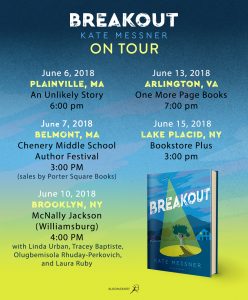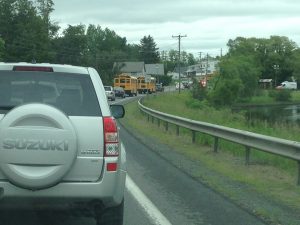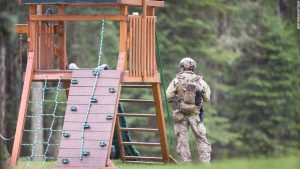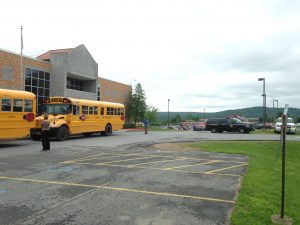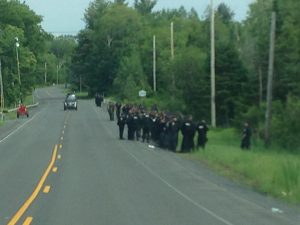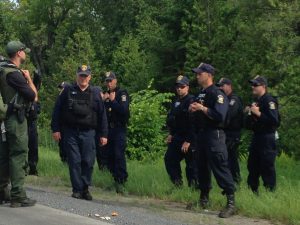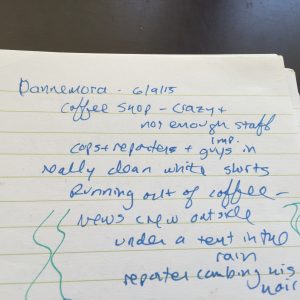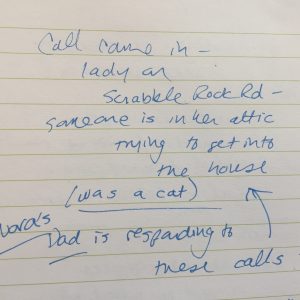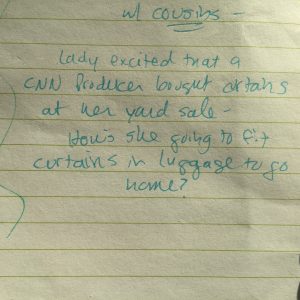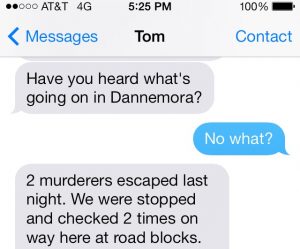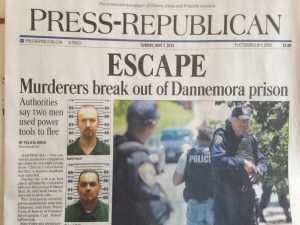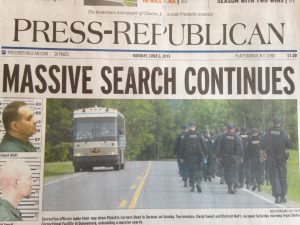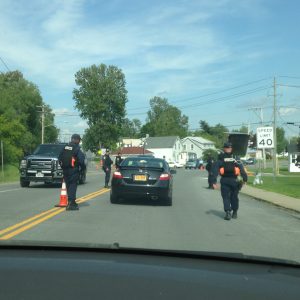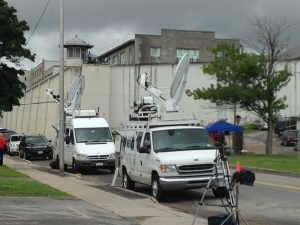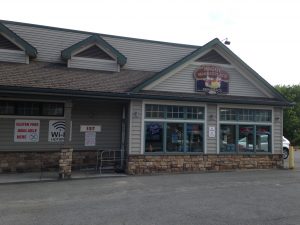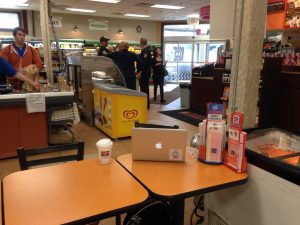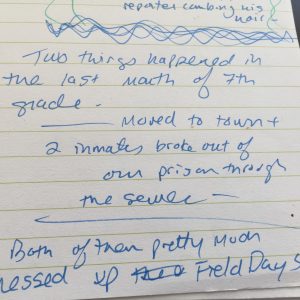My next novel, BREAKOUT, comes out on June 5th, and I have fun news to share, so here’s a quick round-up of what’s happening, including some great links for teachers, librarians, and writers!
Review News
BREAKOUT is about three kids caught in the middle of a small-town prison break and manhunt that change the way they see their neighbors and the place they call home, and I’m thrilled to share that it’s earned starred reviews from both School Library Journal and Publishers Weekly. You can view the full reviews at the links, but here are some quick excerpts:
Narrated by all three girls through letters, recorded conversations, and texts, this is an effective, authentically wrought look at how fear and ignorance can lead people to treat those of different races or from different places with suspicion. Messner (The Exact Location of Home) shines a light on the ways that people are blind to their own privilege while quick to judge others. Though the look at societal racism, as in the prison system, is well explained, it’s the racism Nora and Lizzie discover in themselves, and their desire to change it, that will linger with readers.
~Publishers Weekly
An accessible format and a unique focus on contemporary issues of criminal justice and racial bias make this an essential purchase.
~School Library Journal
And I’m thrilled that independent booksellers chose BREAKOUT as one of their Top Ten titles for the Summer 2018 Kids’ Indie Next List!
Podcast & Interview News
BREAKOUT is also featured on one of my favorite podcasts, The Yarn! I talked with Colby Sharp about my writing process and the power of books with unconventional structures.
And here’s an interview with School Library Journal where we talk about how teaching informs a writer’s work, the power of stories with multiple points of view, and working with sensitivity readers.
#CountdownToBreakout – A Writing-Process Blog Series
In the days leading up to BREAKOUT’s release, I’m sharing a series of blog posts called #CountdownToBreakout, a detailed look at the writing process behind this novel, from brainstorming and research to revision. There will be revision charts and marked-up manuscript pages galore, and I hope that you’ll check it out if you’re interested in writing and teaching writing. It will be a great one to share with student writers, and every post ends with a writing prompt! Clicking here will bring you to a list of the posts published so far.
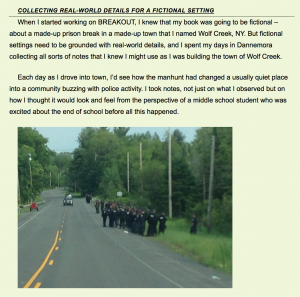
BREAKOUT Sneak Preview!
Want to start reading BREAKOUT now? You can download a sneak preview of the first 40 pages or so here.
Pre-Order BREAKOUT
Finally – if you haven’t already, I’d love it if you’d pre-order your copy of BREAKOUT now. Here are some ways to do that:
PRE-ORDER SIGNED COPIES OF BREAKOUT FROM THE BOOKSTORE PLUS
If you’d like a signed copy, you can call my local indie booksellers at The Bookstore Plus at 518-523-2950 or order online here and note in the comments field how you’d like your book signed. I’ll personalize and sign it for you, and it’ll be mailed out on release day!
PRE-ORDER BREAKOUT FROM ANOTHER FAVORITE BOOKSELLER
You can also order from your own favorite bookseller, either online or in person at the store. (Indie bookstores are always my favorite because that way, you can buy a great book and support a business in your own community. You can find your nearest indie bookseller here.)
Bloomsbury is offering a great incentive for pre-orders, too – a free poster and set of bookmarks to share. Details about that are here.
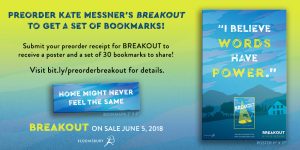
And if you live near one of the cities where I’ll be on book tour this June, please come by and say hello!
